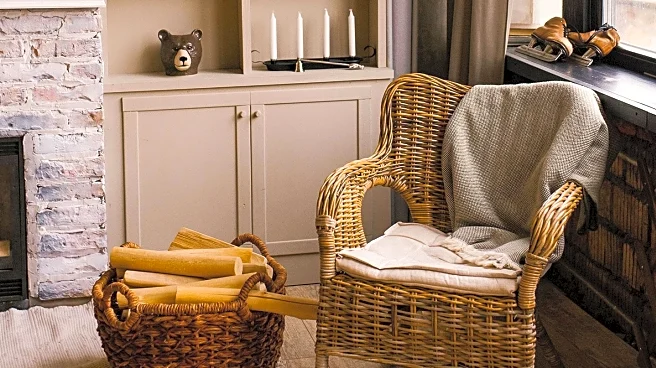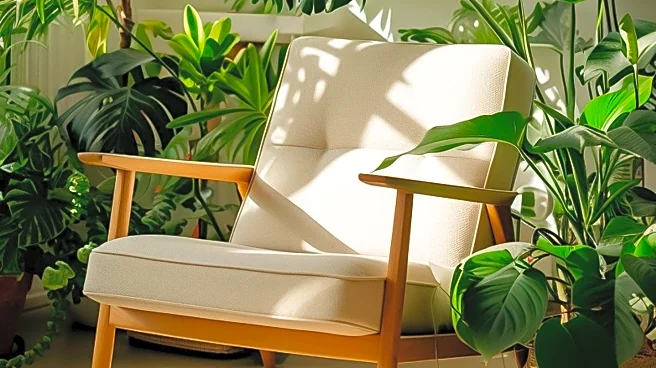What's Happening?
Aaron Preyer, a recent graduate from Eindhoven, has introduced the Blooming Furniture project, which features kinetic furniture that transforms in response to touch and interaction. The collection includes
pieces like poufs and side tables that can morph into lounge chairs, utilizing internal mechanisms sensitive to pressure and weight changes. Inspired by the natural growth and transformation of plants, Preyer's designs celebrate the mechanics involved, making them integral to the aesthetic. The project aims to expand beyond individual pieces into a comprehensive collection, showcasing the fusion of functionality and design.
Why It's Important?
Preyer's Blooming Furniture project represents a significant innovation in furniture design, emphasizing movement and adaptability. This approach could influence future trends in the industry, encouraging designers to explore dynamic and interactive elements in their creations. The project highlights the potential for furniture to offer more than static functionality, appealing to consumers seeking versatile and engaging home environments. As the collection grows, it may attract interest from manufacturers and retailers looking to incorporate such innovative designs into their offerings.
Beyond the Headlines
The Blooming Furniture project raises questions about the future of furniture design, particularly regarding sustainability and user interaction. By integrating movement and transformation, these designs challenge traditional notions of furniture, potentially leading to new standards in design and manufacturing. The emphasis on visible mechanics also invites discussions on transparency and the celebration of engineering in everyday objects.












